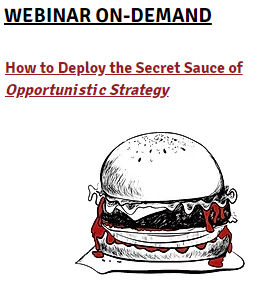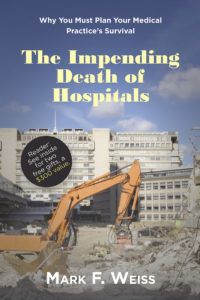Dirigibles, lighter than air craft, and cakes.
I guaranty you that it’s about more than hot air.
It’s often bemoaned that industry leaders suffer from being in an echo chamber.
For example, most healthcare industry leaders know a lot about the way that other healthcare deals, or other ASCs, or other medical groups, and so on, are organized. But what do they know about deals, and ways of doing business, in other spheres?
That’s a shame, because there are many valuable lessons from other industries that can be borrowed for great benefit.
That sort of borrowing is one of the things that I’ve drawn on over a career that started with working in stores, restaurants, and factories, and in being an industrial salesman, doing real estate deals, and so on, plus the probably 100 industries that I’ve been involved in as a lawyer.
But, even if you haven’t done any of that, there are some tools you can use to imagine different ways of structuring your business, whether your business is an anesthesia group, a hospital, or a whatever.
Much of what I’m going to mention is inspired by a book by Mark Fox called Da Vinci and the 40 Answers. In the book, Fox interprets concepts developed in the former Soviet Union by Genrich Altshuller. At one point in his career, Altshuller was an employee in the Soviet equivalent of the patent office. He realized over the course of assessing patent applications that ideas could be put into a number of categories. Fox identified 40. I’m not sure if Altshuller identified 40 or 36 or 62; it doesn’t make any difference.
The acronym for Altshuller’s thinking is known as TRIZ from the Russian Teoriya Resheniya Izobreatatelskikh Zadach, the “Theory of Inventive Problem Solving”. The notion is that there are models or basic formulae to follow to guide your thinking in inventing or in making improvements.
So, for example, the concept of the dirigible, a lighter than air craft, is something that floats above an existing structure and the notion of the cake is cutting something up into pieces, that is, into constituent parts.
Think about this in the context of healthcare. An ambulatory surgery center is simply the O.R. cut out of a hospital. A free-standing emergency room is a similar example: It’s the ER cut out of a hospital and then made into a free-standing entity.
The concept of a management entity, an “MSO”, could be conceived of multiple ways. It’s a dirigible floating above an existing structure. Or, it’s something (management) that’s been removed in “piece of the cake” fashion from the entire “cake”, say by the sponsoring medical group, that the group uses to manage itself, and then subsequently expands its function by bringing in other customers, that is, other medical groups to which the MSO provides services.
Think about how other structures, other concepts can be used as models for your current business or for a new business, whether they come from other industries or from thinking guided by tools such as TRIZ.
What’s in a franchise model that might be applied to medical groups? What referral structures are used in the travel business that might grow your facility? How can what a charity accomplishes with a zero budget be applied to acquiring a competitor?
Stuck? Let’s talk.





